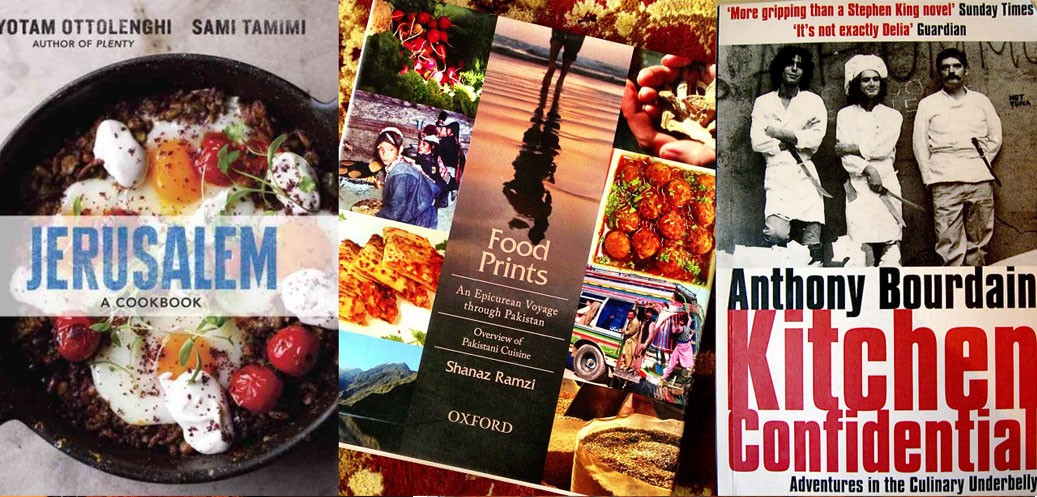

A good recipe can sometimes read like a good short story or a memoir. Take Jerusalem by Ottan Yolenghi. Perhaps, the best cookbook, where Yolenghi, who grew up in Jerusalem, talks about street food and traditional recipes.
The city‘s history of street food and the nostalgia that comes with it make this cookbook rather interesting. Reading the book, one imagines a city where so many cultures from the East and West have mingled -- and the dishes that have come about are one of the finest.
The book carries recipes for dishes like chopped liver which is actually made from eggplant. The poor in Jerusalem found this vegetable closest to liver in taste and cooked it the same way, for they could not afford to buy liver.
For some very fine dishes, a lack of means has proved the catalyst. The Iranian Churba, stews, gravies, where liquids are used to increase the amount of food, probably all owe their existence to straitened circumstances.
Even though the book on Middle Eastern cooking by Arto de Hartounian is not pictorial, it has a very interesting glossary that even has recipes for homemade filo pastry. With every new dish and section, he also writes an introduction detailing a small history of that dish.
Suffice it to say that it is one of the best cookbooks that includes recipes from Antioch to Armenia fun to read.
Anthony Bourdain’s Kitchen Confidential is riveting. He writes his personal history as a chef and how restaurant kitchens are run.
Another book about restaurants, but with recipes, unlike Bourdain’s, is Momofuku. Not only does the author, David Chang, reveal how the Noodle Bar and Ssäm Bar came into existence, he also peppers the books with some interesting recipes. His tone is chatty, and his recipes read more like personal notes explaining how the recipe evolved.
Momofuku, the cookbook, makes great bedtime reading though it might necessitate a trip to the fridge and leave one hoping for some noodles in ginger scallion sauce.
Another such book written by restaurateurs is The Cinnamon Club. This is a restaurant by the same name in London and the brainchild of Vivek Singh, Abdul Yaseen and Hari Nagraj. The presentation of Indian cuisine is one of the best I have ever come across. The simple spinach with mutton -- a good old classic subcontinent dish -- is cooked as a meatloaf with spinach, cut into slices and served on a bed of onion gravy and some bread. This is innovation for the Indian cuisine indeed.
Among works of Madhur Jaffrey, one of the best is A Taste of India. It makes an engrossing but light reading of the different cultures and cuisines that come from India. With pictures and bits and pieces of family history, the first meal ever cooked by one’s mother and other anecdotes about friends and their recipes, the whole ensemble is delightful. This book not only presents a culinary map of India, it also gives specific selection from each part of India as representative cuisine. A good recipe is the Parsi dish, Chicken with Apricots and Potato Straws, from Gujarati cuisine.
Shahnaz Ramzi’s Food prints is a detailed glossary of all Pakistani recipes, from breads of Hunza to the dried goat cheese from Quetta. But it does not venture into the more exotic side of Pakistani cooking and sticks to tried and tested favourites like haleem and balti gosht.
A note on cookbooks can never be complete without the mention of the great Julia Child, admirably acted out by Meryl Streep in the film Julie and Julia. A film to gladden any food enthusiast’s heart. Her volume one and two of French cooking are excellent, with descriptions and illustrations on how to prepare food, which pan to use and other cooking techniques. The best of Julia is a note on how to flip a crepe over in the air so it lands on its face. The trick to a perfect flip, she writes, is confidence. Also, her recipe for savoury crepes is the best I have come across so far.
Nearer to home, the best cookbook is arguably by Kaukab Khwaja. So far, she is the only one who asks her reader to make sushi using cucumbers, rice and spinach leaves in place of nori. I am tempted to try this recipe one of these days.
Reading all these books is relaxing, for they are written with style and the pictures make the dishes look enticing. The best thing about them is they make us feel like we are nothing less than gourmet chefs!